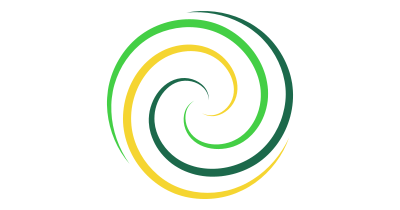
A Compass for the EU towards 2030
Navigating the EU's economy beyond GDP by applying the Doughnut Economics framework

As each of the many ongoing processes have their own sets of indicators and corresponding targets to measure progress towards these indicators , policymakers are challenged to ensure targets across one policy area do not entail tensions and trade-offs with another. At the same time, policymakers need to be able to communicate the EU’s progress to the public.
However, currently each of the EU’s policy processes has its own monitoring dashboard, or one is planned. This proliferation of dashboards makes it difficult for decision-makers to grasp the EU’s most important social, economic and environmental developments; to communicate social, environmental and economic progress to the public with a narrative fit for the challenges ahead; and to find harmony between tensions across policy areas.
To address these challenges, the ZOE Institute proposes an overarching dashboard with targets to 2030 which encompasses the priorities of and uses indicators and targets from across different EU policy processes. This dashboard should:
- Track the EU’s progress towards a regenerative economy in particular environmental sustainability, wellbeing and resilience.
- Provide an easily accessible and cross-departmental summary of indicators of existing dashboards, including the resilience dashboards, the 8th EAP monitoring framework, the Social Scoreboard, the SDGs and the upcoming European Green Deal (EGD) dashboard.
- Help to mainstream a beyond GDP agenda throughout the Commission and Member States’ various services as a cross-cutting priority.
- Give a clear visual representation of the EU’s priorities that enables decision-makers and citizens to quickly grasp the EU’s important trends and help readers to easily identify important interconnections between policy objectives that need to be balanced and gaps in goal achievement.
This report presents a set of 30 indicators and corresponding targets that can be used for this overarching beyond GDP dashboard, all of which come from existing EU data sources. This report also describes the methodology we used to define the indicators and targets as well as justifications for choosing each of them. We conclude with a set of six concrete recommendations for the EU Commission, EU Member States and the EU Parliament to consider based on our deep analysis of existing dashboards and our selection of indicators.
Go to the ZOE Institute website to explore the compass and read the report
-
Member


Francis D'Silva
Oslo, Norway
I am an experienced systems-oriented architect and consultant, now working in the public sector. I have earlier built and designed software that implements national-scale platforms for business-to-government interactions and public-private collaborations. My interests are in the exploration of practices that accelerate interventions in societal systems. Two sides of practices: Side 1: Shaping, implementing, and evolving digital infrastructures and Side 2: enhancing interdisciplinary collaborations that feed Side 1.
-
Member

Catherine Rodgers
Nairobi
Dreaming and visioning of an Alternative Future that cares for people and planet before profit.
-
Member


Pritesh Dineschandra Kotecha
Lisbon, Portugal
Enthusiastic and energy spreader are some of the soft skills that makes me a life passionate. Married and father of 2 (10 and 4yo couple), I consider myself a hedonist and an epicurist. Enjoying all the pleasures life have to offer, try to practice a work-hard-play-hard/YOLO positioning. Humanist by heart and Illuminist by mind. Liberal regarding the markets, conservative regarding customs. Love to cook and Lego collector, Benfica supporter
-
Member

Aleksandra Kekkonen
Tallinn, Harjumaa, Estonia
Circular Economy and Sustainable Living enthusiast. Experienced Researcher with a demonstrated history of working in the higher education industry, skilled in Human Capital, Macroeconomics, Innovation Regional Development, International Relations, and Business Process Management, Circular Economy, and Project Management.
-
Member

Christiane Lellig
Aldershot, England, United Kingdom
-
Member


Adolfo Chautón Pérez
Cáceres, Extremadura, España & Marvão, Alentejo, Portugal
I am Spanish, I have a degree in Geography, a Masters in Strategic Territorial Development and have been living betwenn Spain in Portugal, in the frontier since October 2019. Professionally, I have 20 years of experience, always as a freelancer, working in different areas related to the territory: planning, participation, dynamization... For the last 15 years I have been working as a facilitator in territorial innovation and socio-ecological entrepreneurship, both as a facilitator of processes, as a trainer and mentor of social innovation projects or as a writer of several strategic territorial planning projects based on social innovation, both at regional and national level in Spain and internationally. As an independent researcher, I have developed several projects in which the Doughnut Economics model is always one of the strategic components. + info I am currently coordinating the BoraBeirã project in which the "LojaPlaneta" initiative is integrated. [Banner_Embajadora.png] [ ] #EMBAJADORA_ADE https://www.alianzadonut.es/
-
Member


Thomas Arnold
Bruxelles, Région de Bruxelles-Capitale, Belgium
Active Senior, DG Research and Innovation, European Commission
Comments
Join the DEAL Community!
Get inspired, connect with others and become part of the movement. No matter how big or small your contribution is, you’re welcome to join!